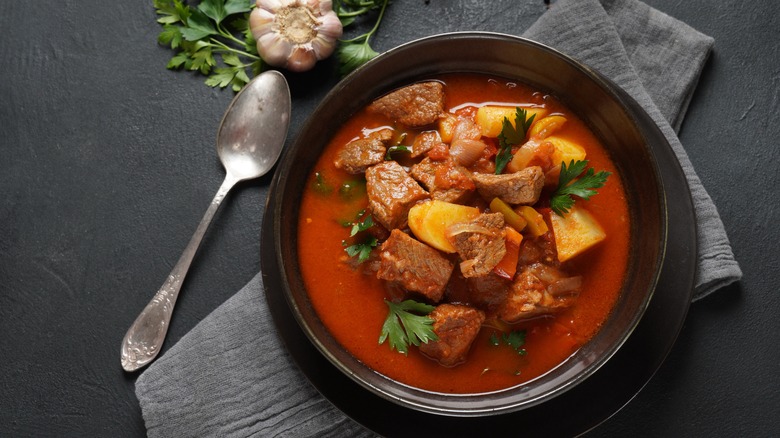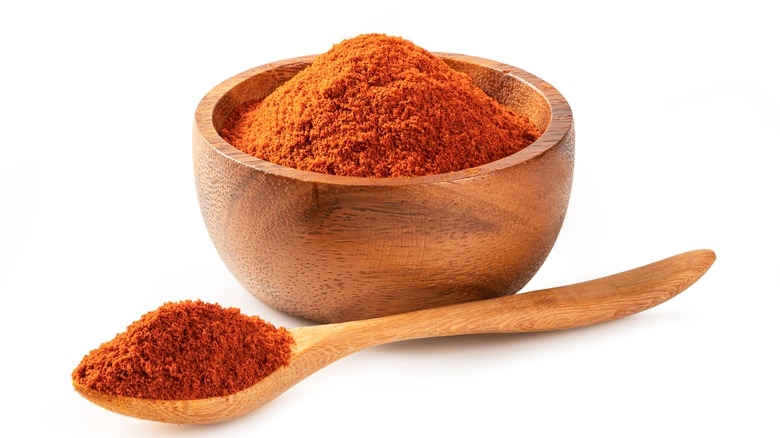The Ingredient Hungarian Goulash Always Uses
Goulash has always been a hearty meal intended to fortify and satisfy hunger. In its earliest form, goulash was made by shepherds who would simmer whatever meats, vegetables, and other ingredients they had on hand with water to create a meal, according to Daring Gourmet. These 9th century herdsmen would cook the stew in a heavy kettle over a fire. These gulays, or cowhands, would be traveling from the Hungarian Steppes to markets in European countries further west, per Philo's Kitchen. What was missing was a key ingredient that is essential to modern-day Hungarian goulash, which wasn't introduced until a few centuries later. Even so, the early version of goulash was important to these nomadic people tasked with keeping the animals safe.
Throughout its evolution, goulash became increasingly popular in Hungary, which has adopted it as its national dish, according to Daring Gourmet. Thicker than a soup, but not as thick as a stew, traditional goulash also lacks the abundance of meat and vegetables found in beef and potato stew. Best of Hungary states that goulash is best made and eaten while drinking Hungary's famous wine called Bull's Blood and enjoyed with friends.
It's not goulash without this red spice
Goulash may date its origins back to more than a millennium ago, but it wasn't until the 15th century that it got its quintessential ingredient: Paprika. The Daring Gourmet recounts that when the Ottoman Turks invaded, they introduced paprika to the Hungarians, who quickly embraced the spice made of red pepper flakes. In fact, when Hungarians make the traditional dish, they use a lot of paprika, per The Daring Gourmet. But not just any paprika should be used to make goulash. The type used in Hungarian cooking is different from others, per Best of Hungary. It possesses an intense red pepper flavor and is naturally dried in the sun, compared to the Spanish type of paprika that is smoked over a wood fire.
A recipe for Rustic Hungarian Goulash shared by A Spicy Perspective calls for ¼ cup of Hungarian paprika. Philo's Kitchen's recipe recommends three tablespoons of Hungarian sweet paprika. In addition to paprika, Philo's Kitchen states that you should use other essential spices for goulash are caraway seeds, black pepper, and bay leaves. While traditional Hungarian goulash is not served with pasta (unlike American goulash), Philo's Kitchen reports that you can toss the sauce with noodles, spaetzle, or vermicelli, or serve the pasta as a side.
Perhaps the next time you crave a stew, opt for a hot bowl of Hungarian goulash that has satiated both cowhands and modern-day diners with its flavors.

